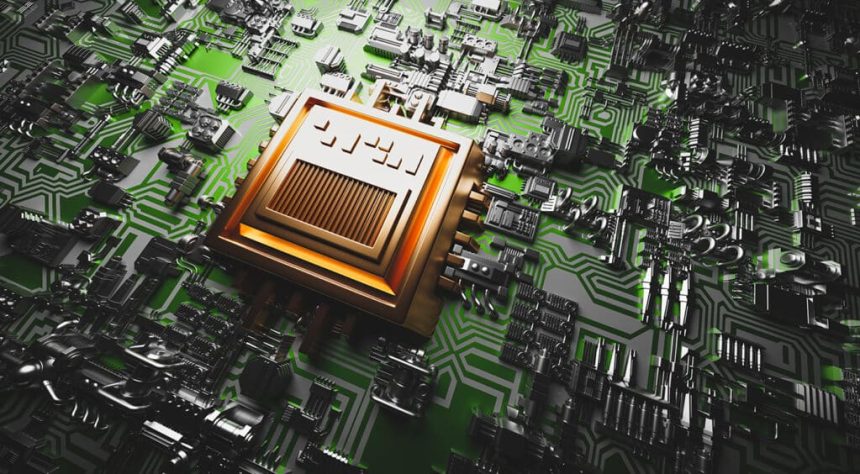In today’s modern kitchens, technology is deeply integrated into the functionality and convenience of everyday appliances. From smart refrigerators to advanced ovens, the heart of this innovation lies in a small but mighty component — the Printed Circuit Board (PCB). PCBs have revolutionized how kitchen appliances work, enabling automation, energy efficiency, smart control, and compact designs. This article explores how PCBs are used in kitchen appliances, their benefits, types, design considerations, and what the future holds for PCB integration in the kitchen environment.
What is a PCB?
A Printed Circuit Board (PCB) is a flat board made of insulating material, usually fiberglass, with conductive pathways etched or printed onto it. These pathways connect various electronic components such as resistors, capacitors, microcontrollers, sensors, and more. PCB act as the backbone of electronic circuits, ensuring organized, reliable, and efficient signal and power flow.
They come in several types, including single-sided, double-sided, and multi-layer boards, each suited to different applications depending on complexity and functionality requirements.
Why PCBs are Essential in Kitchen Appliances
The inclusion of PCBs in kitchen appliances brings a host of advantages that cater to modern demands:
1. Automation and Smart Features
Most smart kitchen appliances rely on PCBs to manage advanced functions. For example, a smart oven can monitor internal temperature, connect to Wi-Fi, and notify the user via an app when cooking is done — all coordinated through a microcontroller on a PCB.
2. Compact and Efficient Design
PCBs allow designers to pack complex circuitry into compact appliances. This is crucial in small kitchens or for sleek, minimalist appliance aesthetics.
3. Energy Efficiency
With intelligent power management circuits integrated onto PCBs, many appliances operate more efficiently, using less power while delivering high performance.
4. Safety and Reliability
Kitchen environments involve heat, moisture, and frequent usage. PCBs are designed to withstand these challenges, ensuring long-term reliability and safety through thermal-resistant and moisture-proof designs.
Common Kitchen Appliances that Use PCBs
Let’s explore how PCBs are integrated into different types of kitchen appliances:
1. Microwave Ovens
Microwaves use PCBs to control cooking functions, power levels, timers, and safety features like door sensors. The user interface — usually a keypad and display — is also governed by a PCB.
2. Refrigerators
Modern refrigerators use PCBs for temperature control, humidity regulation, and defrost cycles. Smart fridges include PCBs that support touchscreen panels, cameras, and Wi-Fi connectivity.
3. Dishwashers
Dishwashers rely on PCBs to control water temperature, pressure, and cycle timing. Advanced models also use sensors managed by the PCB to optimize detergent use and cleaning cycles.
4. Coffee Makers
From single-serve machines to barista-level espresso makers, PCBs manage brewing time, water temperature, and user preferences.
5. Induction Cooktops
PCBs play a crucial role in controlling heating elements, adjusting power levels, and providing digital displays and touch-sensitive controls.
6. Air Fryers and Multicookers
Air fryers, pressure cookers, and multicookers use PCBs to allow users to select modes, adjust settings, and ensure even cooking through programmed cycles.
Types of PCBs Used in Kitchen Appliances
1. Single-Sided PCBs
These are basic boards with components on one side and conductive pathways on the other. They’re often used in simpler appliances like toasters or blenders.
2. Double-Sided PCBs
Used in moderately complex appliances like dishwashers or air fryers, they offer better performance and component density.
3. Multilayer PCBs
These are found in advanced appliances like smart refrigerators and ovens. They can house more functionality and support digital communication between different parts of the appliance.
4. Flexible PCBs
These are used in tight spaces and curved designs, such as control panels or door-mounted electronics in refrigerators.
Design Considerations for Kitchen Appliance PCBs
Designing PCBs for kitchen appliances is different from designing for a typical office gadget. Some key considerations include:
1. Thermal Management
Many kitchen appliances generate heat. PCBs must dissipate heat efficiently to protect electronic components. Designers use heat sinks, thermal vias, and specialized materials.
2. Moisture Resistance
Appliances like dishwashers and coffee makers operate in humid environments. PCBs are often coated with conformal coatings to protect against corrosion and short circuits.
3. EMI Shielding
Electromagnetic interference (EMI) can disrupt signals in devices. Shielding and grounding strategies are built into PCB design to maintain consistent performance.
4. Durability and Longevity
Appliances are expected to last for years. PCBs must be manufactured to withstand thousands of operation cycles, voltage fluctuations, and environmental stress.
The Rise of IoT in Kitchen Appliances
The Internet of Things (IoT) has entered the kitchen in a big way. From remote monitoring to voice command operations, smart appliances rely heavily on PCBs with wireless communication modules (e.g., Wi-Fi, Bluetooth).
For instance:
- A smart refrigerator can detect spoiled food using sensors connected to PCBs.
- An oven can be preheated via smartphone app using PCB-controlled relays and modules.
- A coffee machine can brew your morning cup at a scheduled time using an integrated PCB microcontroller and timer.
These IoT functions are only possible because of advancements in PCB technology, enabling seamless communication between hardware, sensors, and software.
Benefits of PCB Integration in Kitchens
Let’s break down the most significant advantages PCBs offer in modern kitchens:
1. Customization
PCBs allow manufacturers to design appliances with multiple user settings, presets, and control modes.
2. Space Efficiency
With PCBs, functions that once needed large mechanical components can be integrated into small, lightweight boards.
3. Maintenance and Repair
Diagnostic systems embedded in PCBs can detect malfunctions and display error codes, making repairs easier and faster.
4. Enhanced User Experience
Touchscreens, LED displays, voice controls, and app connectivity are all made possible through PCB integration.
Challenges and Limitations
Despite their many benefits, PCBs in kitchen appliances do face challenges:
- Exposure to high heat and moisture requires robust protective measures.
- Component failure due to voltage spikes or moisture ingress can lead to appliance malfunction.
- Cost of repairs may be higher compared to older, non-digital appliances because replacing a PCB is often more expensive than replacing a mechanical part.
To counter these challenges, manufacturers are investing in rugged PCB designs, quality control testing, and modular component layouts for easy servicing.
The Future of PCBs in the Kitchen
As kitchens become smarter and more energy-efficient, PCBs will continue to evolve to meet growing demands:
1. AI-Enabled Appliances
AI-driven kitchen devices will require advanced PCBs that can handle machine learning algorithms and real-time data processing.
2. Green Electronics
Eco-friendly PCB materials and low-power circuitry will help reduce the environmental footprint of kitchen electronics.
3. Smaller, More Powerful Boards
Miniaturization will allow even the smallest appliances to become “smart,” bringing intelligent features to handheld devices like hand mixers or electric kettles.
4. 3D Printed PCBs
As 3D printing in electronics evolves, custom PCBs for appliances could be printed on-demand, enabling faster prototyping and customized appliance designs.
Conclusion
The integration of PCB in kitchen appliances marks a significant leap forward in home convenience, safety, and intelligence. As the core of electronic functionality, PCBs empower kitchen devices to become smarter, more efficient, and user-friendly. From simple controls in blenders to complex connectivity in smart refrigerators, PCBs are truly transforming how we cook, store, and interact with food.
For consumers, understanding the role of PCBs highlights the value behind the sleek touch panels and automated timers. For manufacturers, innovation in PCB design is key to staying competitive in a rapidly advancing market.
As we look to the future, one thing is certain — the PCB will continue to be a central figure in the evolution of the modern kitchen.







